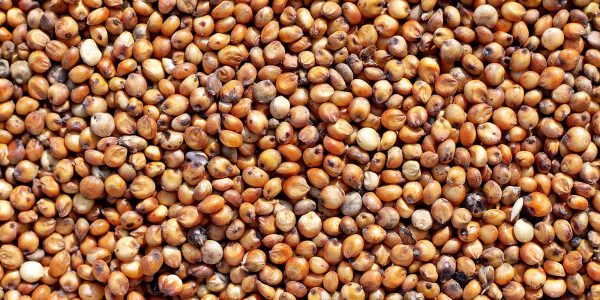
Sorghum Test Weight and Its Meaning
Brent Bean, Sorghum Checkoff Agronomist
Lubbock, Texas
When growers discuss their crops at the end of the season, yield is the first topic mentioned, but test weight usually is not far behind. Common thinking is that yield is strongly influenced by test weight. Although many times high yields will be accompanied by high test weight, this is not always the case.
After the plant has completed flowering and initiated seed set, drought stress, cool temperatures, an early freeze, long stretches of cloudy weather, insects, diseases — both foliar and stalk — and other factors can reduce the rate of grain fill and directly affect yield by lowering the weight of each kernel. However, test weight can remain high if the reduction in the rate of grain fill is accompanied by a reduction in kernel size.
Test weight is simply the weight of the grain in a bushel, or more precisely in 1.24 cubic feet. In the field or at the delivery point, test weight of a sample of grain typically is measured by filling a 1-pint (64 pints to a bushel) or 1-quart container and determining its weight. Grain sorghum is sold in the U.S. either in 100-pound increments or in bushels using a standard weight of 56 pounds. In the distant past it was probably easier to buy and sell grain based on a volume measurement (bushel) than to accurately weigh the grain or maybe to trust the accuracy of the scale or honesty of the scale operator. As such, the standard weight for a bushel was born for the various grain crops.
Test weight is influenced by two factors: (1) the density or weight of each kernel and (2) the shape and size of the kernels and how they fit together. The more round the grain sorghum kernel, the more kernels can be packed into a given space, in this case a bushel. Moisture also plays a big role in test weight. When grain with high moisture content is dried, the kernels shrink and become denser, causing test weight to increase. However, at low moisture levels, a further reduction in moisture may lower the test weight because the kernels may no longer shrink and weight is simply lost.
From a grower’s perspective, when a truck loaded with grain crosses the scales, the total weight of a load of high test weight sorghum weighs more than low test weight sorghum. The grower gets paid more for the high test weight load and, as long as test weight remains at or above 55 pounds per bushel to qualify as No. 2 grade sorghum, most buyers will not levy a discount.
However, from a yield standpoint, test weight is irrelevant. The important factor is the total pounds of grain that pass over the scales from the field, regardless of the number of trucks it takes to deliver it.
Growers should keep in mind that buyers are interested in test weight because it is an indicator of grain quality. High test weight grain usually hasa high amount of starch anda hard endosperm. Another benefit of high test weight grain is that it takes up less space, making storage and transportationmore efficient. Also, high test weights are associated with less foreign material and fewer broken kernels.




